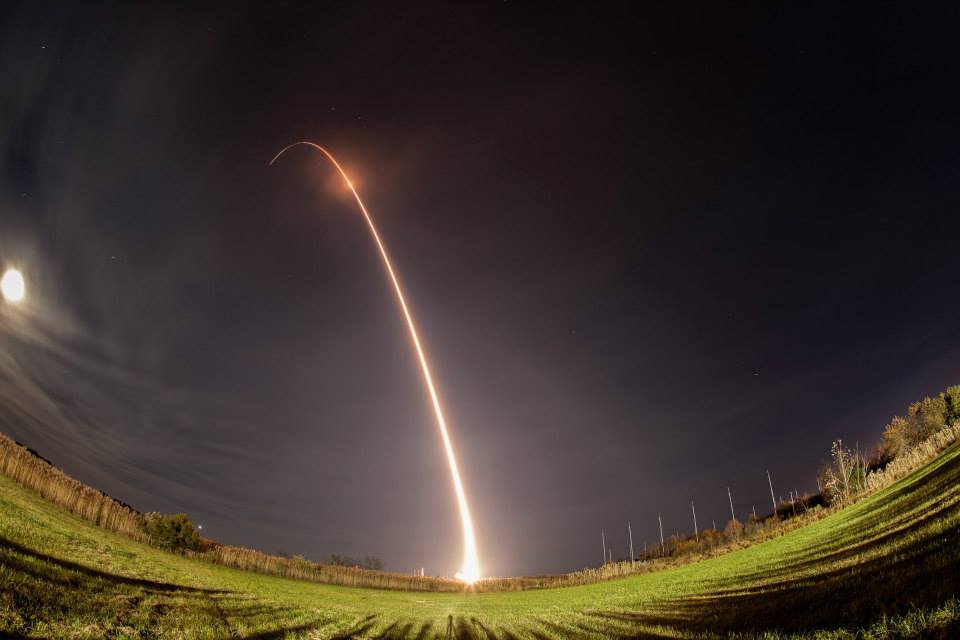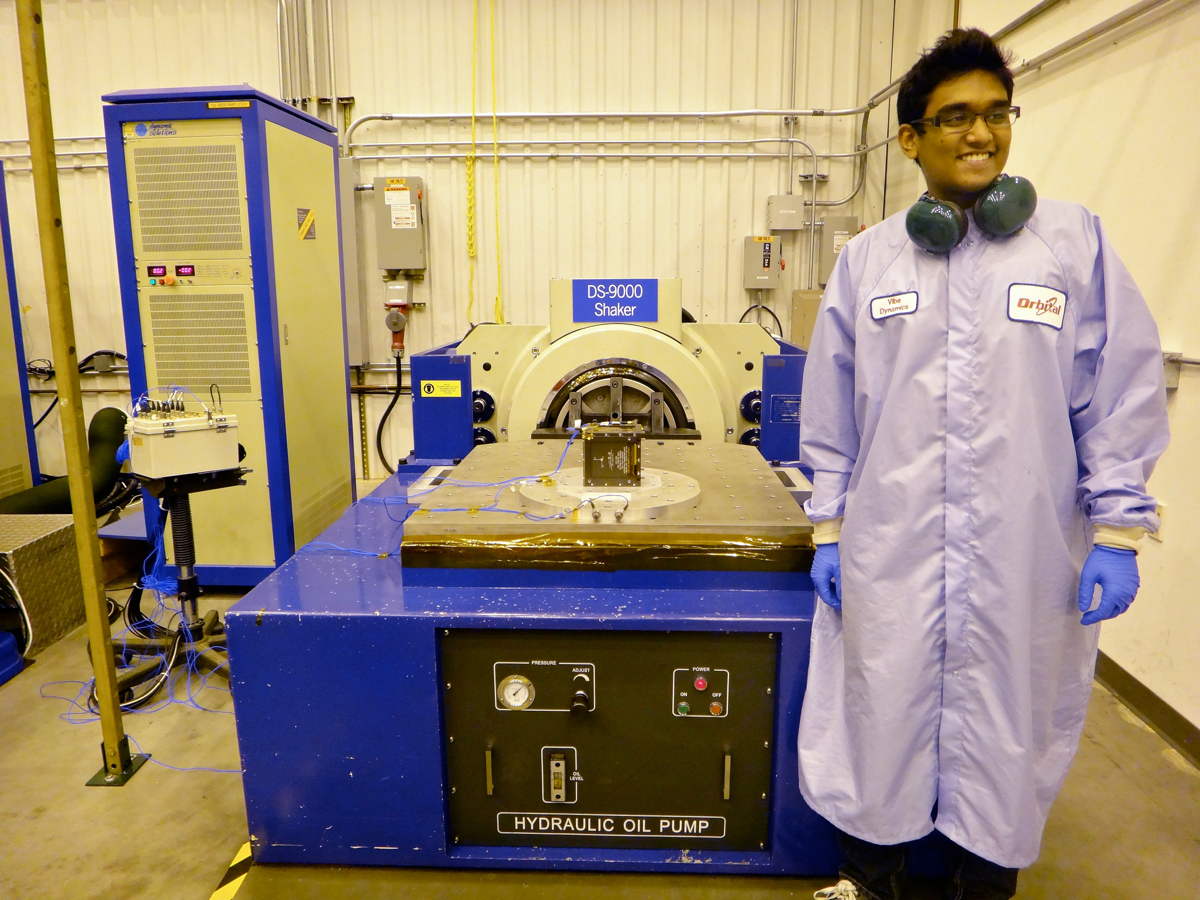Spectacular Night Rocket Launch Wows Skywatchers on US East Coast (Photos)

A dazzling rocket launch that hurled a record 29 satellites into orbit from Virginia's eastern shore Tuesday night was also visible to potentially millions of observers on the U.S. East Coast, thrilling skywatchers who photographed the amazing space shot.
The Orbital Sciences-built Minotaur 1 rocket launched a cornucopia of satellites into orbit Tuesday (Nov. 19) at 8:15 p.m. EST (0115 GMT Wednesday) from a pad at NASA's Wallops Flight Facility on Wallops Island, Va. Because of the launch's trajectory, it was expected to be visible from northeastern Canada to Florida, and as far inland as Kentucky, according to Orbital Sciences officials.
"What an amazing sight to see," skywatcher Debbie Stone, who watched the rocket launch from Charlton, Mass., told SPACE.com in an email. Stone's long-exposure view of the launch shows the Minotaur 1 rocket as an arc of light over a dark landscape. [See more amazing Minotaur 1 rocket launch photos by SPACE.com readers]
From my observing post in West Orange, N.J., the launch appeared as fast-moving light with a blazingly bright reddish-orange hue streaking to the southeast.
"Daddy, I see the rocket," my 4-year-old daughter Zadie told me as we watched the launch with neighbors.
Tuesday's rocket launch was orchestrated by the U.S. military's Operationally Responsive Space Office and was aimed primarily at launching the U.S. Air Force's $55 million STPSat-3 satellite, which is carrying five experiments and sensors to measure the space environment. The 28 other tiny cubesat satellites included TJ3Sat, the first-ever satellite designed and built by high school students, and NASA's new PhoneSat 2.4, a satellite built from smartphone components.
The Minotaur 1 rocket launched from a pad at the Mid-Atlantic Regional Spaceport, a commercial launch site overseen by the Virginia Commercial Space Flight Authority that is located on the grounds of NASA's Wallops Flight Facility.
Breaking space news, the latest updates on rocket launches, skywatching events and more!
Clear weather conditions played a deciding factor in whether the Minotaur 1 rocket launch would be visible to the millions of potential spectators along the U.S. East Coast, since low clouds or rain could spoil the event. In September, another Orbital Sciences rocket — this one a larger Minotaur 5 booster — also launched at night to send NASA's LADEE lunar probe on its way to the moon. That night launch also wowed skywatchers along the East Coast.
Louis Suarato managed to see the launch from Albany, N.Y., and almost immediately posted an image on Twitter to capture the moment.
"Albany is 400 miles north of Wallops Island," Suarato told SPACE.com in an email just after the launch. "It was a wonderful view!"
Based on emails sent in to SPACE.com, Tuesday night's launch had the same effect. Photos and accounts of sightings came in from across the East Coast, including Washington, D.C., where observer Corey Clarke captured a view of the rocket over the U.S. Capitol Building from his observation spot at the National Academy of Sciences' Keck Center.
Other observers simply enjoyed the spectacle.
"After being a fan of spaceflight my entire life I finally got to see a space launch with my own two eyes," skywatcher Jim Jacoby told SPACE.com in an email after watching the launch through binoculars. "Even though I am hundreds of miles away from the launch site in western Pennsylvania, it was still awe inspiring. I even got to see the first stage separation shortly after it got over the horizon."
The next major rocket launch from the Wallops Flight Facility will be a larger Orbital Sciences Antares rocket, which is also expected to make a dazzling night launch when it lifts off on Dec. 15.
Editor's Note: A huge thank you to all the readers who sent in photos of the Minotaur 1 rocket launch Tuesday night. SPACE.com was flooded with images and we will be adding them to our skywatching gallery throughout the week. If you still have an amazing image of the launch, or any night sky view, that you'd like to share, you can send it in to managing editor Tariq Malik at spacephotos@space.com.
Email Tariq Malik at tmalik@space.com or follow him @tariqjmalik and Google+. Follow us @Spacedotcom, Facebook and Google+. Original article on SPACE.com.

Tariq is the award-winning Editor-in-Chief of Space.com and joined the team in 2001. He covers human spaceflight, as well as skywatching and entertainment. He became Space.com's Editor-in-Chief in 2019. Before joining Space.com, Tariq was a staff reporter for The Los Angeles Times covering education and city beats in La Habra, Fullerton and Huntington Beach. He's a recipient of the 2022 Harry Kolcum Award for excellence in space reporting and the 2025 Space Pioneer Award from the National Space Society. He is an Eagle Scout and Space Camp alum with journalism degrees from the USC and NYU. You can find Tariq at Space.com and as the co-host to the This Week In Space podcast on the TWiT network. To see his latest project, you can follow Tariq on Twitter @tariqjmalik.




